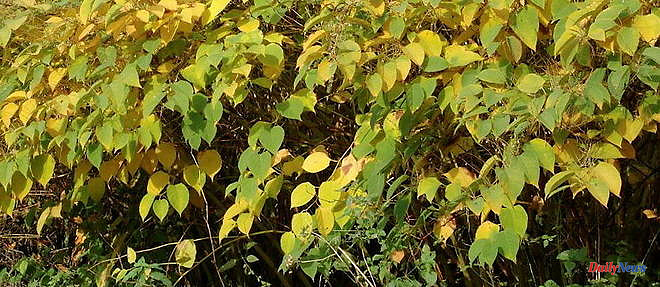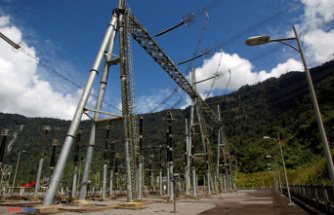It is a tall plant, a long stem bordered by two rows of triangular leaves, with white bells when flowering. Japanese knotweed, which grows along roadsides and rivers, is seemingly harmless. It is even very elegant. Yet it is a plant plague, which it is almost impossible to get rid of, as the plant grows with disconcerting ease.
Secret to its resilience: Knotweed thrives in all types of environments, including those transformed by human activity. "It is a very stress-tolerant plant, which makes it a pioneer species, which settles where others cannot survive," explains Florence Piola, ecologist at Lyon-1 University. Its adaptability is enhanced by a physiology allowing it to optimize its production and use of nutrients. In other words, it grows even on poor soils.
Once installed, the knotweed has many assets to impose itself against competing species. Not only does it flower early, making it one of the first species to emerge in spring, but its very rapid growth rate – up to six inches per day – and its dense foliage also allow it to capture more light than its neighbours.
It is therefore impossible to completely get rid of this species, which is tearing the hair out of the road services of many municipalities. Juliette Arrighi, from the natural space and biodiversity department of the Savoie department, is fighting against this proliferation. “The clumps are too many. The only time you can apply eradication techniques on a large scale is during heavy work,” she explains.
Escaped from large estate gardens, planted empirically, knotweed has thrived in all types of environments, including places where it poses safety risks: "On roadsides, this plant poses visibility problems, this creates an accident risk,” concludes Juliette Arrighi. Since 2008, the local authority has been training its agents to maintain the edges of the road without spreading the seeds of these plants.
Asian knotweeds are of three species. Originating from the Russian Far East and northern Japan, the two natural species arrived in Europe through trade: "In the 19th century, plants from abroad excited the imagination and knotweed was aesthetically pleasing . A Dutchman brought this flower back from Japan, where it was used as a medicinal plant, before a horticulturist from Lorraine introduced it to France," says Mélanie Thiébaut, from Lyon-1 University, who retraced the history of this plant.
Widespread in many countries around the world, knotweed is a species that we have to live with, and that we should try to understand better, according to Florence Piola: "Our research tries to understand the functional role of this plant in its ecosystem, whether positive or negative. »
A wish shared by the department of Savoie, which works with the University of Savoie-Mont-Blanc on the recovery of knotweed waste, to reduce the costs associated with the uprooting of these plants. The continuation of a long common history between knotweed and the human species












